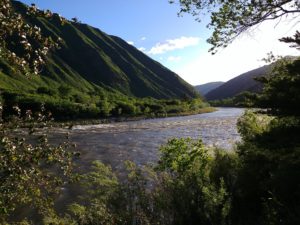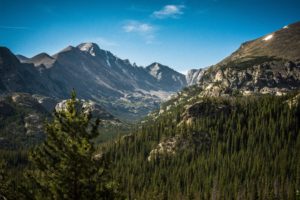Watershed protection got a big boost last month with the passing of the 2018 Farm Bill and it couldn’t have come at more critical time. Throughout the Upper Colorado River Basin and Great Basin water supply volume forecasts for April-July are already below average. Drier soils conditions and poor snow pack add insult to injury. Combine these factors with longer and more unpredictable fire seasons and it becomes abundantly clear that we need to protect our source water supplies more than ever before.

Peaks to People, along with many others, are thrilled to see greater access to funding for conservation projects under the new legislation. According to Kevin Moran, Senior Director, Colorado River Program, “The new provisions in the farm bill also could help farmers and water agencies develop and fund projects that improve drought resilience and planning in the Colorado River basin, where the river supplies water for 40 million people and 6 million acres of farmland each year.”
The folks at Carpe Diem West recently met up with Mike Anderson, Senior Resource Analyst for The Wilderness Society, to talk about the positive impacts the Farm Bill could have in keeping our headwaters healthy. He explains the 2018 Farm Bill includes three of the Healthy Headwaters Alliance’s top legislative priorities.
- The Water Source Protection Program, which requires the Forest Service to work with downstream water users to develop partnerships to protect and restore water supplies.
- The authorization of the Watershed Condition Framework, which directs the Forest Service to classify all national forest watersheds on their functionality, and develop watershed restoration action plans in cooperation with partners.
- The re-authorization and doubling of the funding level for the Collaborative Forest Landscape Restoration Program (CFLRP), which funds collaborative restoration projects mostly aimed at reducing fuels and fire risk.
 When asked if he thinks this new legislation will begin to move us to a scale of action needed to tackle the enormous challenges we face Mike was optimistic. He said, “With the new authorities and the adoption of the fire funding fix, there’s a good chance we will see a significant increase in funding for watershed restoration work.” He strongly recommends utilities and other partners begin working with the Forest Service right away to develop their plans and proposals for the new federal funding so this valuable opportunity is not lost. He said, “It’s the same with the CFLRP – groups who are interested in applying for that new funding should be working on their plans and strategies now. It is a competitive process, so creating strong proposals is important.”
When asked if he thinks this new legislation will begin to move us to a scale of action needed to tackle the enormous challenges we face Mike was optimistic. He said, “With the new authorities and the adoption of the fire funding fix, there’s a good chance we will see a significant increase in funding for watershed restoration work.” He strongly recommends utilities and other partners begin working with the Forest Service right away to develop their plans and proposals for the new federal funding so this valuable opportunity is not lost. He said, “It’s the same with the CFLRP – groups who are interested in applying for that new funding should be working on their plans and strategies now. It is a competitive process, so creating strong proposals is important.”
While we will need to await the 2019 appropriations process to see how much funding these new programs actually receive, it is exciting to finally have bi-partisan support for conservation efforts and watershed protection in particular. Our communities and businesses need clean water to survive and thrive. Let’s make protecting it our top priority.
